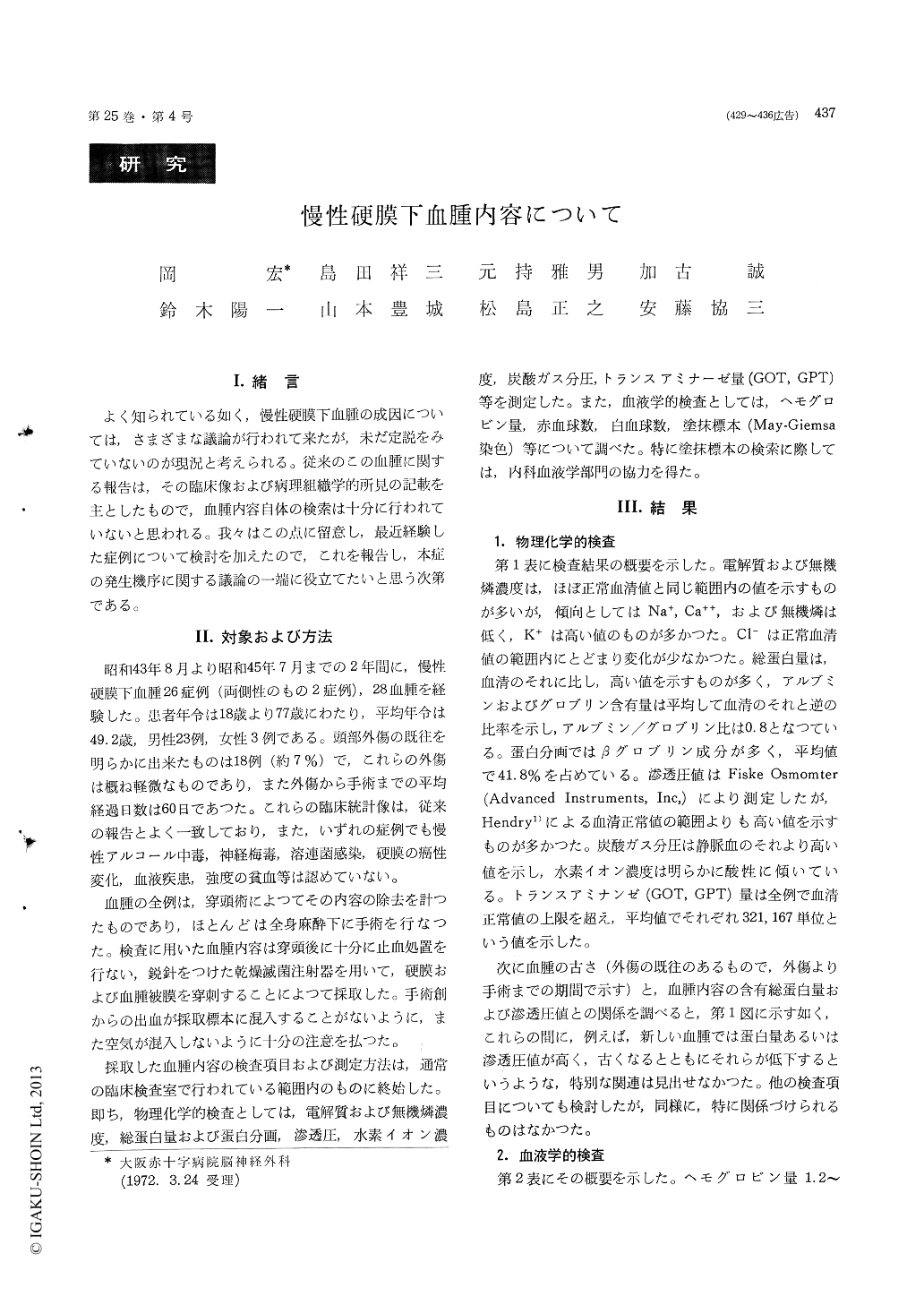Japanese
English
- 有料閲覧
- Abstract 文献概要
- 1ページ目 Look Inside
I.緒言
よく知られている如く,慢性硬膜下血腫の成因については,さまざまな議論が行われて来たが,未だ定説をみていないのが現況と考えられる。従来のこの血腫に関する報告は,その臨床像および病理組織学的所見の記載を主としたもので,血腫内容自体の検索は十分に行われていないと思われる。我々はこの点に留意し,最近経験した症例について検討を加えたので,これを報告し,本症の発生機序に関する議論の一端に役立てたいと思う次第である。
As well known, the pathogenesis of chronic sub-dural hematoma is not established yet, though there has been much argument about it. Hitherto, many investigators have exclusively described the clinical picture and histology relating to the hema-toma membrane and adjacent tissues, but there are few reports on the contents of hematoma fluids. Giving consideration to this point, we have examined the hematoma fluids gathering from 26 cases of the chronic subdural hematoma, which were experienced in recent two years. The fluid specimen was obtained through burr holes by punc-turing the dura with a sharp needle. The specimen was analyzed by the routine clinical laboratory works.
The contents of hematoma fluids in physico-chemical studies revealed in general a resemblance to those of the normal serum. Concentrations of electrolytes and inorganic phosphorus in most cases were within normal limits of the serum. Values of total protein, osmolality and PCO2 showed a slightly rising tendency in many cases as compaired with those of the serum. Transaminase (GOT,GPT) values were distinctly higher than those of the serum.
In hematological studies, the contents of hema-toma fluids showed a wide variety, just as support-ing that of appearance of fluids. The most remark-able finding was that the nucleated red blood cells were disclosed in the subdural space with occur-rence of 60 per cent in cases, which was not related with an existence of head injury history. From the morphology, they were judged as the normo-blasts consisted mainly of the orthochromic or polychromic ones and their numbers were 20 to 1070 per cubic millimeter. There was a tendency to show that the more the numbers of normoblasts increased, the more those of red blood cells in hematomas were on the increase and it was sug-gested that a part of the red blood cells in hema-tomas had an origin due to the extramedullary hematopoiesis.
There was no trend to present a remarkable relation between the results in physicochemical or hematological studies and the age of hematomas (an interval from head injury to operation) or the symptomatology of hematoma cases.
The results in this study did not give sugges-tions to a possible explanation for the initial forma-tion of hematomas, but supported that the contents of hematoma fluids did not elapse in static condition and the bleeding into the subdural space occurred occasionally. It seemed to be difficult to exaplain the expansion of hematoma size only by the higher osmolality of hematoma fluids.

Copyright © 1973, Igaku-Shoin Ltd. All rights reserved.


